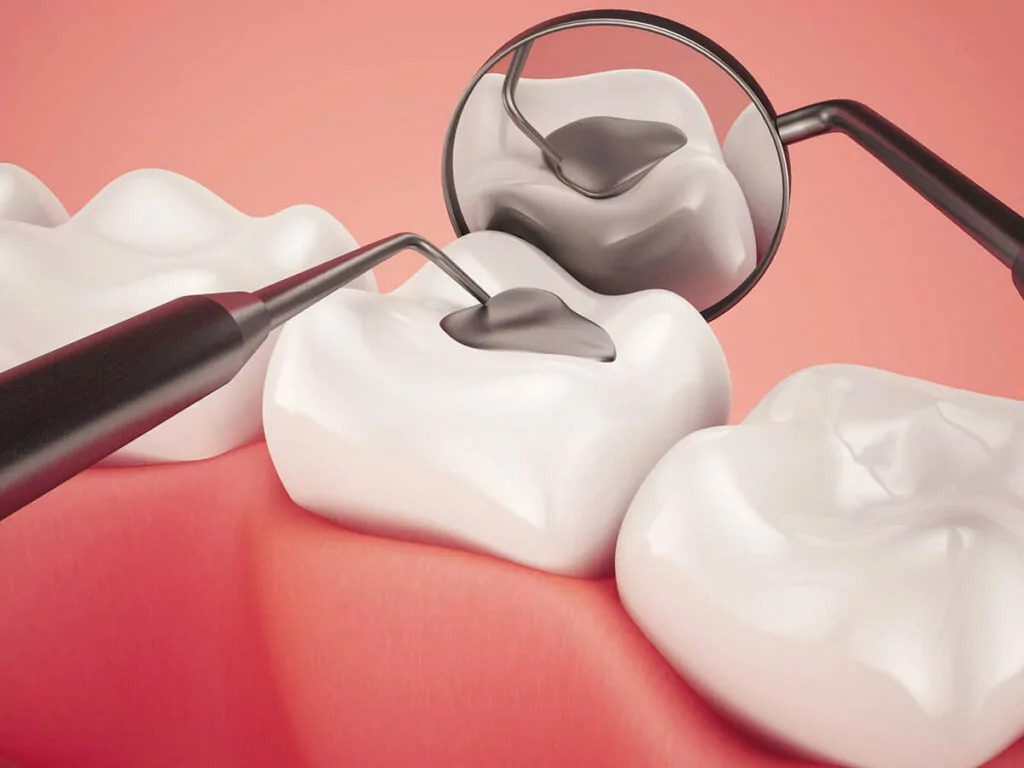You probably do not give much thought to your dental fillings. But these small, unassuming pieces of dental work are actually important in preventing tooth decay. Today we will take a look at how dental fillings work and how they can help prevent tooth decay.
What is a dental filling?
A dental filling is a tooth restoration option that is used to repair minor tooth damage. The most popular type of filling used by most people is made from a composite material, a mixture of plastic and glass. Composite fillings are matched to the color of your teeth, making them virtually invisible.
Fillings are also made from other materials, such as gold, amalgam (a silver-colored alloy), or porcelain. While these types of fillings are not as popular as composite fillings, they may be recommended for certain situations.
Fillings are installed in teeth that have been damaged by decay. The decay is removed, and the area is cleaned before the filling is placed. Once the filling is in place, it will help to prevent further tooth decay.
Causes of Tooth Decay
Poor Dental Hygiene
Poor oral hygiene habits are one of the primary causes of tooth decay. When plaque and tartar are not removed from the teeth regularly, they begin to eat the enamel away, causing cavities.
Diet
A diet high in sugar and carbohydrates also contributes to tooth decay. When these foods are consumed, they create an acidic environment in the mouth that breaks down the enamel. This can lead to cavities formation or tooth loss in severe cases.
Medical Conditions
Certain medical conditions can also put someone at a higher risk for tooth decay. These include diabetes, dry mouth, acid reflux, and GERD. If you have any of such conditions, be sure to see your dentist regularly so they can help prevent tooth decay.
Different types of dental fillings
Amalgam Fillings
They are made of a mixture of different metals, including silver, tin, and mercury. They are strong and durable and can be used on any tooth in the mouth. However, amalgam fillings are visible when you smile or speak and may darken your tooth over time.
Composite Fillings
They are made of plastic resin and glass particles. These fillings can resemble the color of your tooth, so they are less visible than amalgam fillings. Composite fillings also bond to your tooth, which helps to support the tooth structure. However, composite fillings may not last as long as amalgam fillings and may require more frequent replacement.
Glass Ionomer Fillings
They are made of a glass material that contains fluoride ions. Fluoride is known to help prevent tooth decay, so these fillings can provide some additional protection for your teeth.
How does a dental filling prevent tooth decay?
A dental filling is a restorative procedure used to treat tooth decay. The filling materials, which can be made of gold, amalgam (silver), or composite resin (tooth-colored), are placed into the cavity created by the decay. This restores the tooth to its original shape and function. The filling material helps to seal off the tooth from bacteria and food particles that can cause decay. It also provides support to the structure of the tooth.
Are there any risks associated with getting a dental filling?
When it comes to dental fillings, there are always risks associated with the procedure. This is because any time you have a foreign object placed in your mouth, there is a potential for infection. Additionally, if the filling is not placed properly, it can cause further damage to the tooth.
How long does a dental filling last?
The filling’s lifespan will depend on several factors, including:
The location of the tooth
Fillings in back teeth last longer than those in front teeth because they are not subjected to as much wear and tear.
The size and depth of the cavity
A large or deep cavity requires a more substantial filling that may not last as long as a smaller one.
Your biting habits
If you chew hard foods like ice or grind your teeth, your fillings may not last as long.
Your oral hygiene habits
Good dental hygiene habits are paramount for preventing cavities and keeping fillings intact. Be sure to brush twice a day with fluoride toothpaste and floss daily.
With proper care, most fillings will last 5 to 10 years before they need to be replaced.
Bottom Line
All in all, getting a dental filling is a quick and easy way to prevent tooth decay as well as keep your smile looking its best. If you think you might need a dental filling, be sure to schedule an appointment with our dentist in Bayswater. We can confirm whether or not you need a filling and help you take care of the problem before it accelerates and worsens.

